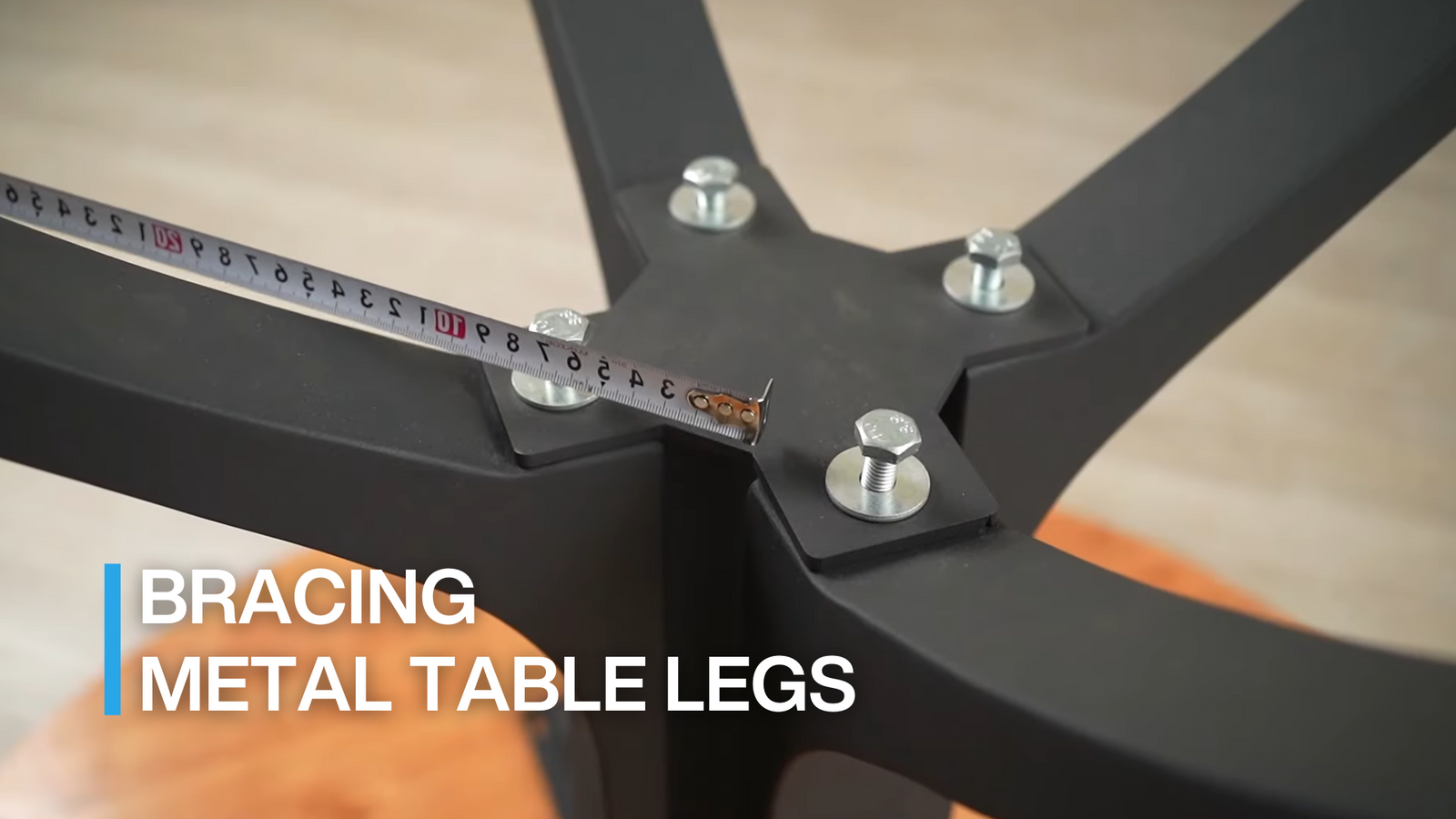Metal tables are popular for their durability, sleek design, and versatility. However, over time, metal table legs can weaken or wobble due to regular use or inadequate support.
Are you tired of dealing with a wobbly table that disrupts your dining or work experience? If so, you've come to the right place. In our comprehensive guide on "How to Brace Table Legs" we'll walk you through the step-by-step process of restoring stability and ensuring that your table stands strong and sturdy.
1. Identify the Problem

Before proceeding with any bracing technique, it's important to diagnose the underlying issue causing the instability. Common problems include loose joints, uneven legs, or weakened connections. By pinpointing the specific problem areas, you can tailor your bracing solutions accordingly.
2. Reinforcing Joints

In some cases, metal table legs can become loose at the joints where they connect to the table frame or tabletop. To reinforce these joints, consider the following methods:
Tightening Bolts and Screws
Check all bolts and screws connecting the legs to the table. If any are loose, use a suitable wrench or screwdriver to tighten them. Be careful not to overtighten, as it may damage the threads or strip the screws.
Adding Lock Washers
Lock washers provide additional grip and prevent screws or bolts from loosening over time. Place a lock washer between the screw/bolt head and the leg, ensuring a secure connection.
Applying Threadlocker
Threadlocker adhesive is another effective solution to prevent bolts and screws from loosening. Apply a small amount to the threads before tightening them, following the manufacturer's instructions.
Learning how to brace table legs is the key to restoring stability and ensuring your table serves you well. With the right tools, materials, and a step-by-step approach, you can easily tackle this DIY task and bid farewell to wobbly tables. Take control of your furniture's durability and enjoy the peace of mind that comes with a securely braced table
3. Leveling Uneven Legs

Uneven table legs can lead to instability and wobbling. Here's how you can address this issue:
Adjustable Leg Caps
Consider installing adjustable leg caps or glides on the bottom of the legs. These caps allow you to adjust the height of each leg independently, compensating for uneven surfaces and ensuring stability.
Shims
If the legs are still uneven after using adjustable leg caps, you can use shims to level them. Place small, wedge-shaped shims under the shorter legs until the table sits level. Use a level to ensure accuracy.
4. Adding Cross Bracing

Make your table as solid as a rock. Bracing table legs is the solution to wobbling woes.
To provide additional structural support and prevent lateral movement, cross bracing is a reliable solution. There are several methods for adding cross bracing:
X-Shaped Braces
Measure the distance between two opposite legs diagonally, and cut a metal or wooden brace to fit. Attach the brace to each leg, forming an X shape. Secure it using screws or bolts, making sure it is tight and rigid.
Lateral Braces
Measure the distance between two adjacent legs, and cut a metal or wooden brace to match. Attach the brace horizontally between the legs, ensuring a secure connection. Use screws or bolts, and reinforce with washers if necessary.
5. Reinforcing the Tabletop
In some cases, wobbling may stem from a weak or unstable tabletop. To reinforce the tabletop, consider these options:
Support Brackets
Attach metal brackets underneath the tabletop where it connects to the legs. These brackets provide additional support and distribute weight evenly, reducing strain on the legs.
Corner Braces
Install metal corner braces on the corners of the tabletop, securing them with screws. These braces reinforce the corners and prevent them from sagging or weakening over time.
Conclusion
Bracing metal table legs is essential to ensure stability and durability. By identifying the problem areas, reinforcing joints, leveling legs, adding cross bracing, and reinforcing the tabletop, you can significantly enhance the strength and longevity of your metal table. Regularly inspect and maintain your table to prevent future instability issues, preserving its functionality and aesthetic appeal for years to come.
- Should read: Maintenance and Cleaning Tips for Metal Table Legs
In conclusion, learning how to brace table legs is a valuable skill that can save you from the annoyance of a wobbly table. This step-by-step guide has provided you with the knowledge and confidence to tackle this common household issue.

